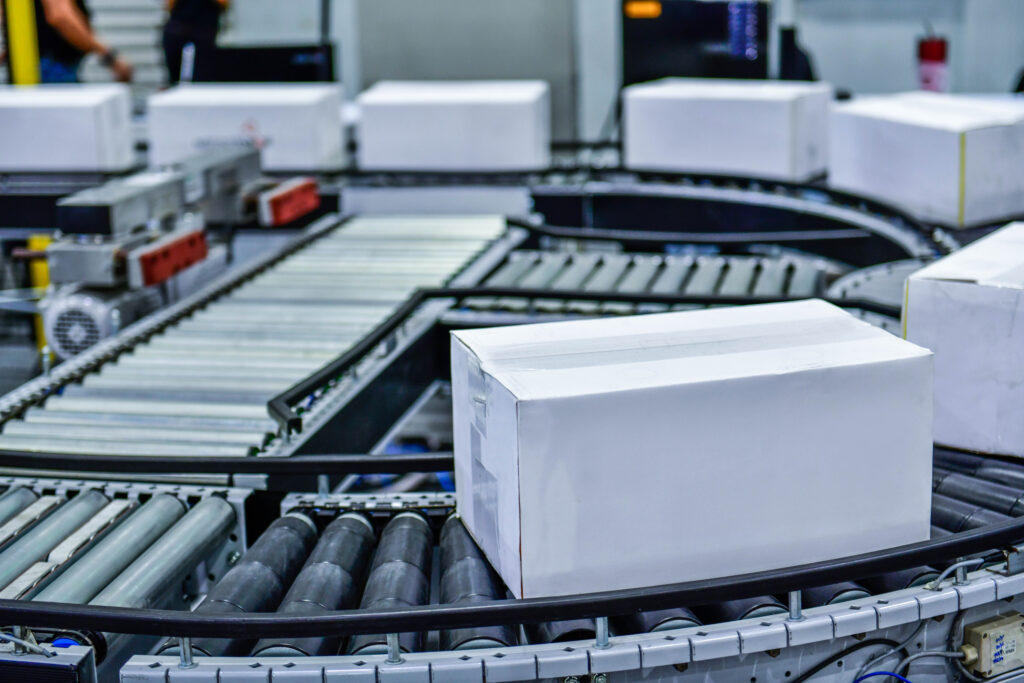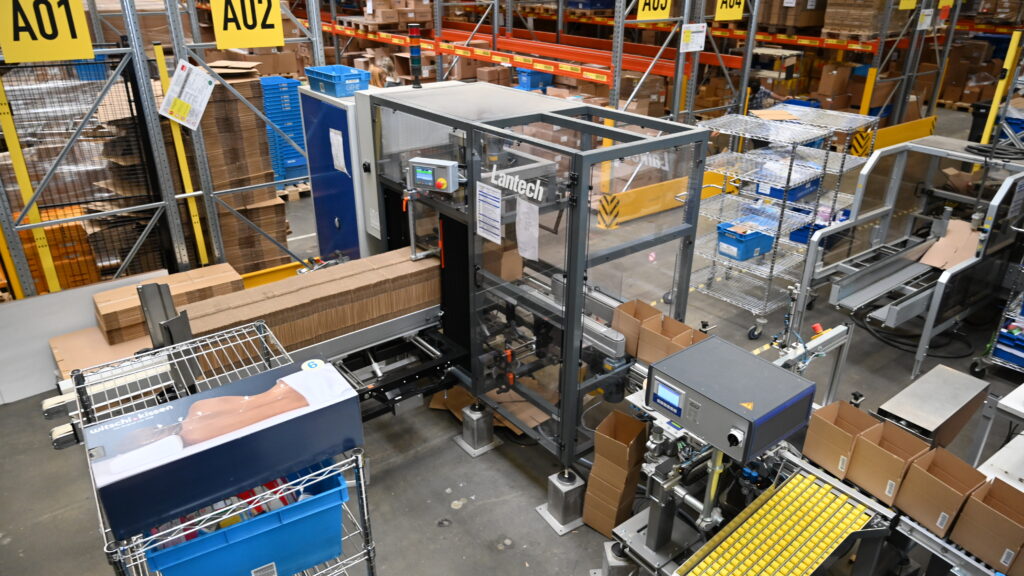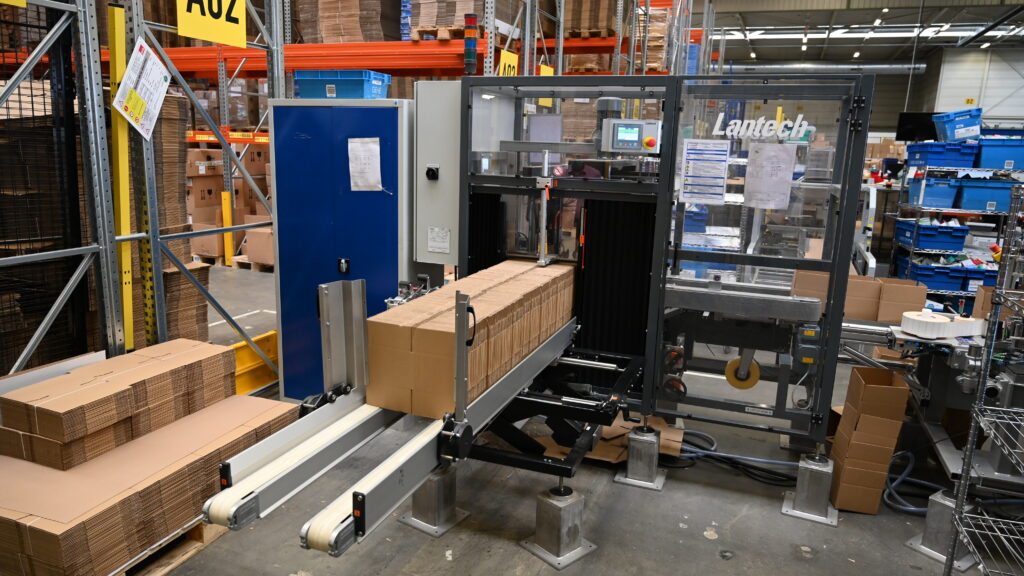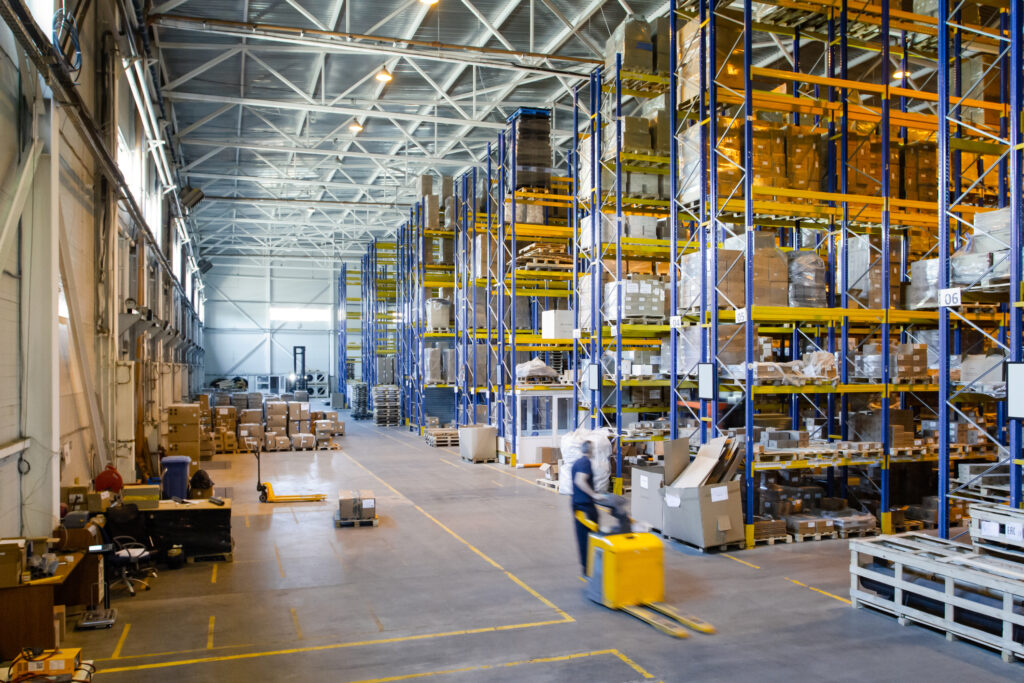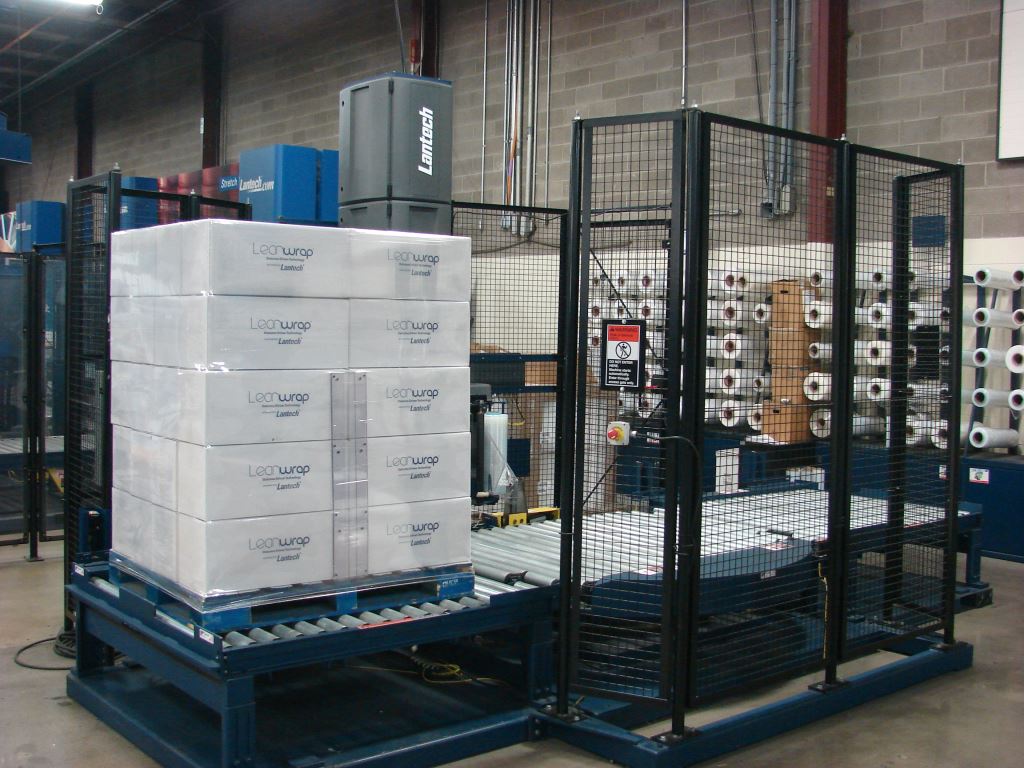Downtime is one of the most persistent and costly issues on any packaging line. Even a few minutes of idle time can disrupt production schedules, delay shipments, and increase labor costs. At a time when demand volatility and labor shortages challenge operational stability, improving packaging line efficiency is no longer optional — it’s essential.
One of the most effective ways to prevent packaging line downtime is by automating the first step in the case packing process: forming the boxes. Manual box forming is frequently overlooked as a bottleneck, yet it often sets the pace for the entire end-of-line operation. A case erector — sometimes called a box erecting machine — automates this task with precision and reliability, ensuring a steady supply of properly formed cases.
For packaging managers, production engineers, and logistics coordinators, understanding how a case erector helps eliminate downtime can unlock meaningful efficiency gains, improve throughput, and create a cleaner, more consistent packaging output.
Table of Contents
- What Causes Downtime on Packaging Lines
- What Is a Case Erector and How It Works
- How a Case Erector Prevents Downtime
- Key Benefits of Using a Case Erector
- ROI and Long-Term Efficiency Gains
- Conclusion
- FAQ
What Causes Downtime on Packaging Lines
Packaging line downtime can stem from a variety of sources, many of which originate with manual case forming. Common causes include:
- Inconsistent case dimensions: Manually formed boxes are often off-square or skewed, which can jam case packers, robotic loaders, or sealers downstream.
- Human factors: When operators get distracted, fatigued, or reassigned, output quality and speed can suffer. Even small interruptions — like stopping to check a phone or fetch cartons — can slow the packaging process.
- Misaligned workflows: When box erecting is slower than case packing or sealing, the line must pause, creating cascading downtime.
- Unnecessary line stoppages: Frequent adjustments, rework, or inspection corrections add to idle time and increase operational frustration.
Each of these factors compounds in high-volume environments, where even a short lapse can stall downstream automation. The result is a packaging line that never reaches its true throughput potential.
What Is a Case Erector and How It Works
A case erector is a machine designed to automatically open, square, and seal the bottom of corrugated boxes for packing. It replaces the repetitive manual process of folding, forming, and taping cases by hand.
In its simplest form, a case erector feeds flat, die-cut blanks from a magazine, opens each one to create a box, secures the bottom with either tape or hot melt adhesive, and then delivers the completed case to the next stage — a case packer or manual packing station.
| Step | Manual Case Forming | Automated Case Erecting |
| 1 | Operator grabs a flattened case | Case erector pulls blank from magazine |
| 2 | Folds and squares bottom flaps | Mechanism opens and squares case |
| 3 | Seals bottom using tape gun | Automated sealing system applies tape or glue |
| 4 | Places case on conveyor or in staging area | Case automatically conveyed downstream |
| Output | 3 cases per minute (average) | Up to 30 cases per minute (consistent) |
By maintaining a continuous rhythm, a case erector eliminates the variability inherent to manual work, ensuring that the packaging line remains balanced and predictable.
How a Case Erector Prevents Downtime
Consistent Case Forming
Consistency is the foundation of automated packaging. When cases are produced manually, subtle defects—such as uneven edges, unsquared corners, or overfilled loads—can throw off downstream processes.
A Lantech case erector produces perfectly squared boxes every cycle, maintaining uniform 90-degree corners and consistent dimensions. For robotic case packing systems especially, this consistency is critical; a robot cannot guess where to place a product if the target box is misshapen.
By ensuring structural accuracy, the case erector minimizes rework and prevents interruptions caused by misaligned cases entering packing or sealing stations.
Reduced Manual Labor
Manual case forming relies heavily on operator focus and endurance. Over the course of a shift, fatigue and human distraction lead to reduced performance and possible injury from repetitive tasks. Absenteeism, unpredictable breaks, and varying skill levels can also create inconsistencies that affect the entire packaging line.
Automating this step eliminates those risks. A case erector doesn’t take breaks, lose focus, or call in sick — it performs the same task, at the same rate, every hour of every shift. This reliability ensures continuous case output and helps stabilize line performance even when staffing levels fluctuate.
Freed from repetitive box folding and taping, operators can refocus on higher-value responsibilities such as inspection, quality assurance, or materials replenishment — roles that benefit from human expertise. Automation also mitigates the risk of worker variability, ensuring that the speed of production remains constant. The result is greater labor productivity, improved consistency, and fewer ergonomic concerns throughout the workday.
Seamless Integration with Other Equipment
Modern packaging lines integrate multiple systems — case erectors, packers, sealers, labelers, and pallet wrappers — into one cohesive workflow.
When upstream case formation is inconsistent, every connected station downstream suffers. Automated case erectors communicate directly with devices like case sealers or robotic packers, ensuring cases arrive consistently oriented, squared, and sealed for optimal handling. This synchronization eliminates jams and stoppages that otherwise require human intervention.
To further enhance uptime, many systems can be programmed with sensors or communication links, signaling when supplies are low or when maintenance is needed without halting the entire line.
Improved Speed and Accuracy
A manual process is always limited by the operator’s pace and attention. A case erector, by contrast, performs the same motion hundreds of times per hour without deviation or delay.
The result:
- Consistent case output rate aligned with the speed of your case packer or filler
- Zero “breaks” between formed boxes — the machine runs continuously
- Reduced error rate due to mechanical precision
Higher speed, combined with built-in consistency, directly translates into fewer micro-pauses or stoppages, helping maintain continuous production flow.
Key Benefits of Using a Case Erector
Integrating an automated case erector delivers measurable improvements across several performance dimensions:
1. Increased Packaging Line Efficiency
- Continuous output eliminates bottlenecks at the box forming stage.
- Predictable production rates make scheduling and throughput forecasting more accurate.
2. Enhanced Product and Package Quality
- Square, cleanly sealed boxes improve pallet stability and customer presentation.
- Uniform packaging helps meet retailer and distributor requirements.
3. Labor Optimization
- Fewer personnel are needed for repetitive forming tasks.
- Existing staff can be reallocated to areas that require decision-making and precision.
4. Reduced Maintenance and Downtime Risk
- Simple, enclosed mechanical systems minimize unplanned stoppages.
- Preventive maintenance schedules can be easily implemented.
5. Better Safety and Ergonomics
- Eliminates bending, folding, and taping motions that often cause repetitive stress injuries.
- Creates a safer, more automated work environment.
Signs You Need a Case Erector
If your packaging line experiences any of the following, it may be time to add or upgrade a case erector:
- Frequent stoppages due to box jams or misaligned seals
- Variability in case shape or sealing quality
- Operators frequently pulled away from other tasks to form boxes manually
- Inconsistent throughput from shift to shift
- High labor costs, overtime or outsourced personnel tied to manual case forming
- Downstream automation — such as case packers or palletizers — performing below expected capacity
ROI and Long-Term Efficiency Gains
A case erector not only reduces downtime but also contributes to significant long-term ROI.
Typical ROI Drivers:
- Labor optimization: Eliminating manual folding and sealing frees up employees to do more meaningful and valuable work.
- Throughput increase: Automated lines operate continuously, maximizing machine utilization.
- Material savings: Consistent tape usage and fewer damaged cartons lower material waste.
- Improved line uptime: Consistent case flow keeps downstream machines running at optimal speed.
Calculate how much you can save in labor by switching to a case erector with this calculator.
Conclusion
Downtime eats into profits, delivery timelines, and team productivity. Most packaging operations accept some amount of inefficiency at the box forming stage — often overlooking how significantly it affects the rest of the line.
A case erector transforms this first step into a predictable, reliable process. By producing consistent, perfectly squared boxes at a steady pace, it supports smooth product flow, minimizes rework, and enables downstream automation to reach its full potential.
Whether your operation relies on manual packing or advanced robotics, the addition of a case erector creates a measurable impact on uptime, operator efficiency, and customer satisfaction.
As packaging automation continues to advance, investing in dependable, integrated equipment — from case sealers to stretch wrappers — becomes a cornerstone of continuous improvement. Explore which case erector models best align with your packaging line or contact our team of automation specialists to request a personalized consultation.
FAQ
1. What are the main causes of downtime on packaging lines?
Downtime is typically caused by labor challenges, inconsistent case forming, misaligned materials, or jams during box transfer and packing.
2. How does a case erector improve production uptime?
By automatically and consistently forming boxes, a case erector eliminates manual variation and ensures a steady supply of cases to keep the line moving.
3. What is the difference between manual and automated case forming?
Manual forming relies on human labor, which can vary in speed and quality. Automated case forming uses mechanical systems to open, square, and seal cases uniformly at higher speeds.
4. How can automation reduce labor costs in packaging?
Automation replaces repetitive manual tasks, allowing existing workers to shift toward more skilled roles while minimizing overtime or the need for additional shifts.
5. What should I consider when choosing a case erector?
Key factors include reliability, ease of use for operators, case size range, sealing method, integration compatibility, expected case throughput, and growth plans.
6. How fast can a case erector pay for itself through increased efficiency?
The ROI on a case erector depends on several variables, but labor savings has the biggest impact on how quickly a case erector pays for itself.


